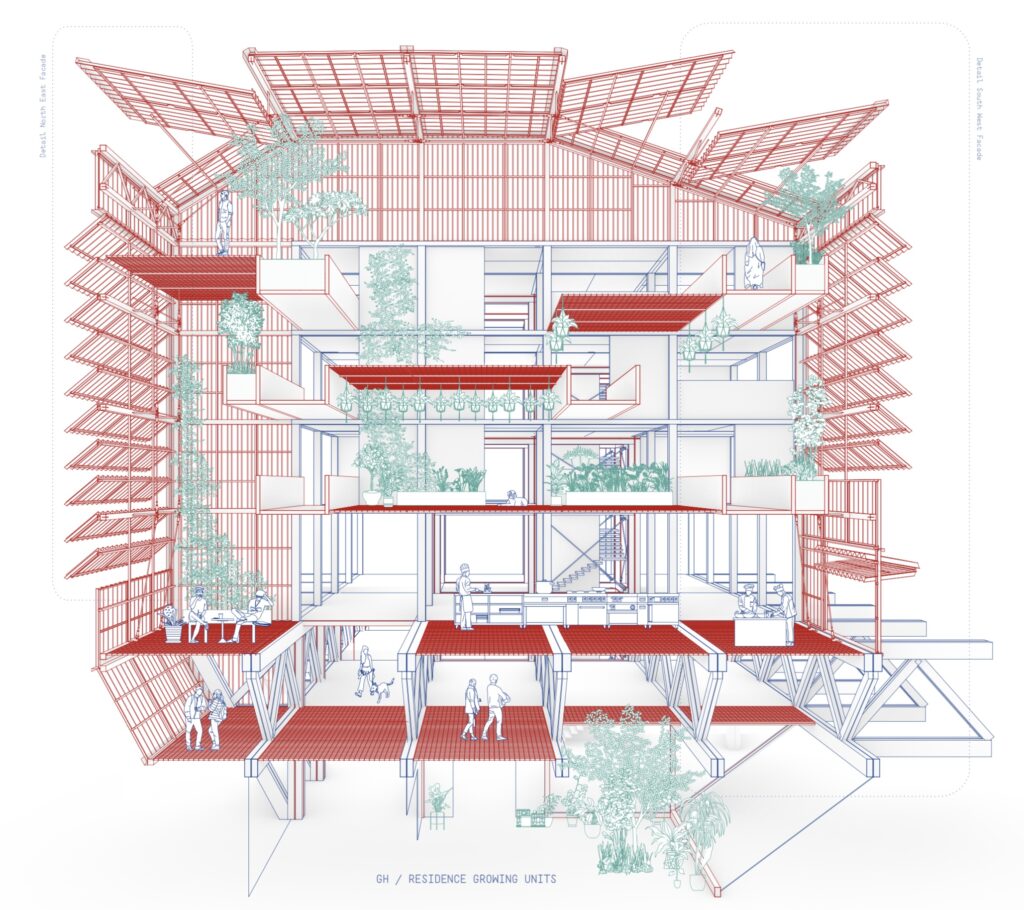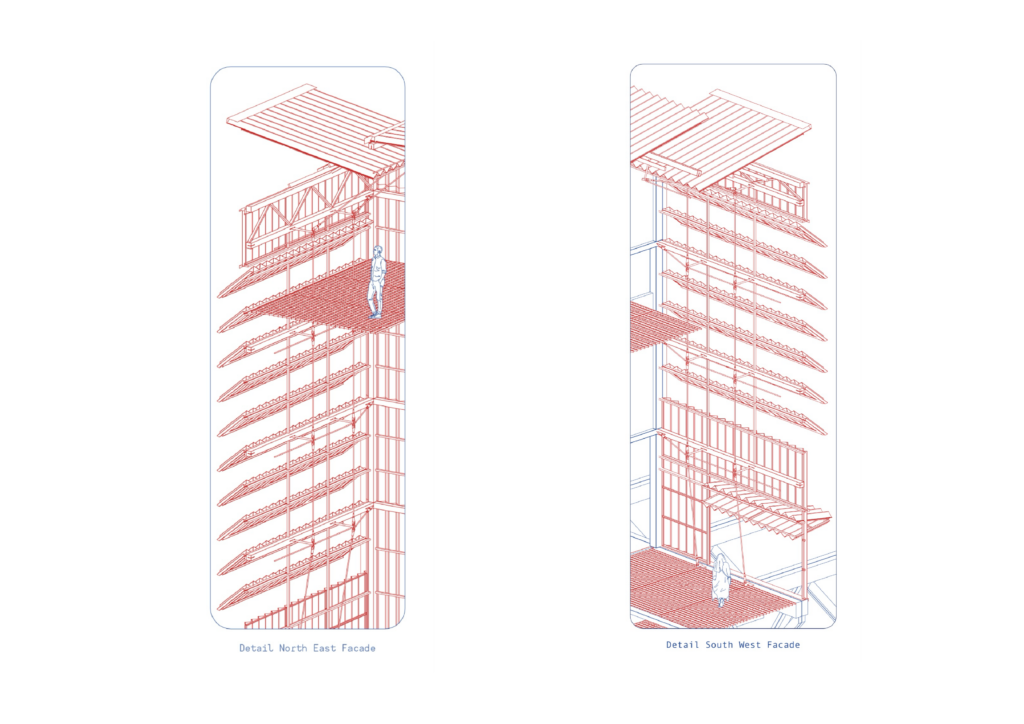In these workshop, we’re diving deep into the world of resilient building envelopes, showcasing how contemporary design can intertwine with sustainability.
Our project is a testament to this, blending innovative materials like corrugated hemp panels, ceramic pots for plant growth and rainwater filtration, wood for balcony structures, and compressed earth blocks for thermal mass. Through a careful solar radiation analysis, we’ve optimized these materials to work with the climate, ensuring our building is not just environmentally friendly but also energy-efficient.
The design includes a dual facade system, one for the living spaces and another for the greenhouse, each tailored to maximize functionality and adaptability. This blog post will unfold the intricate details of our facade design, illustrating the seamless integration of eco-friendly materials and smart construction techniques to pave the way for future sustainable building practices.
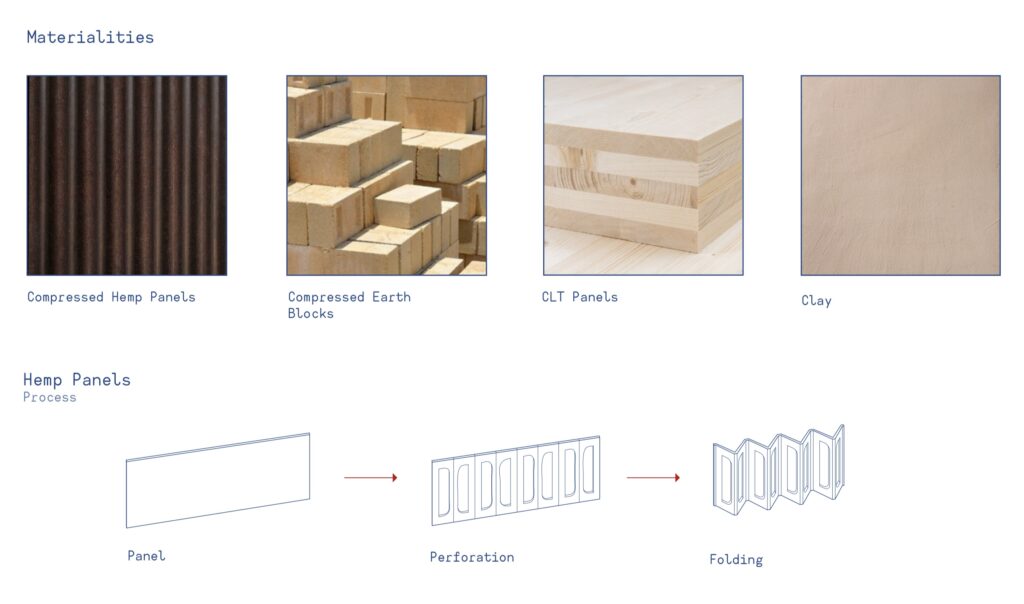
In our project, we’re focusing on using materials that are not only eco-friendly but also practical for building durable and adaptable structures. For the south facade, we’ve chosen hemp panels that are shaped in a corrugated form. These are paired with ceramic pots that match their shape, creating spaces for plants and a system to filter rainwater. We’re also using wood for the structure of our balconies and compressed earth blocks from Fetdeterra for the walls, which help keep the building cool or warm, depending on the weather.
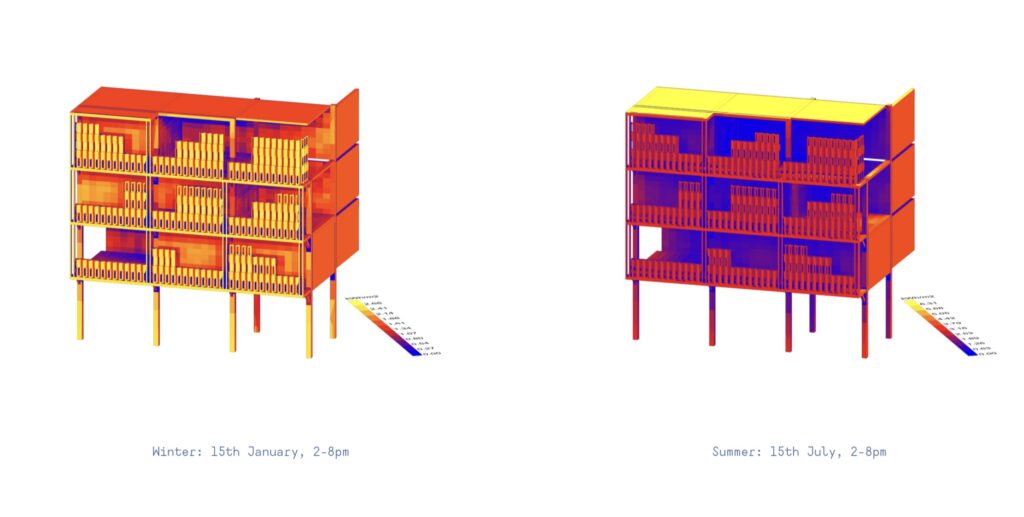
We conducted a solar radiation analysis to make sure that these materials and their layout work well with our climate. This helped us figure out the best way to set up the panels and the building’s design to make the most of sunlight and shade, improving the building’s energy use.
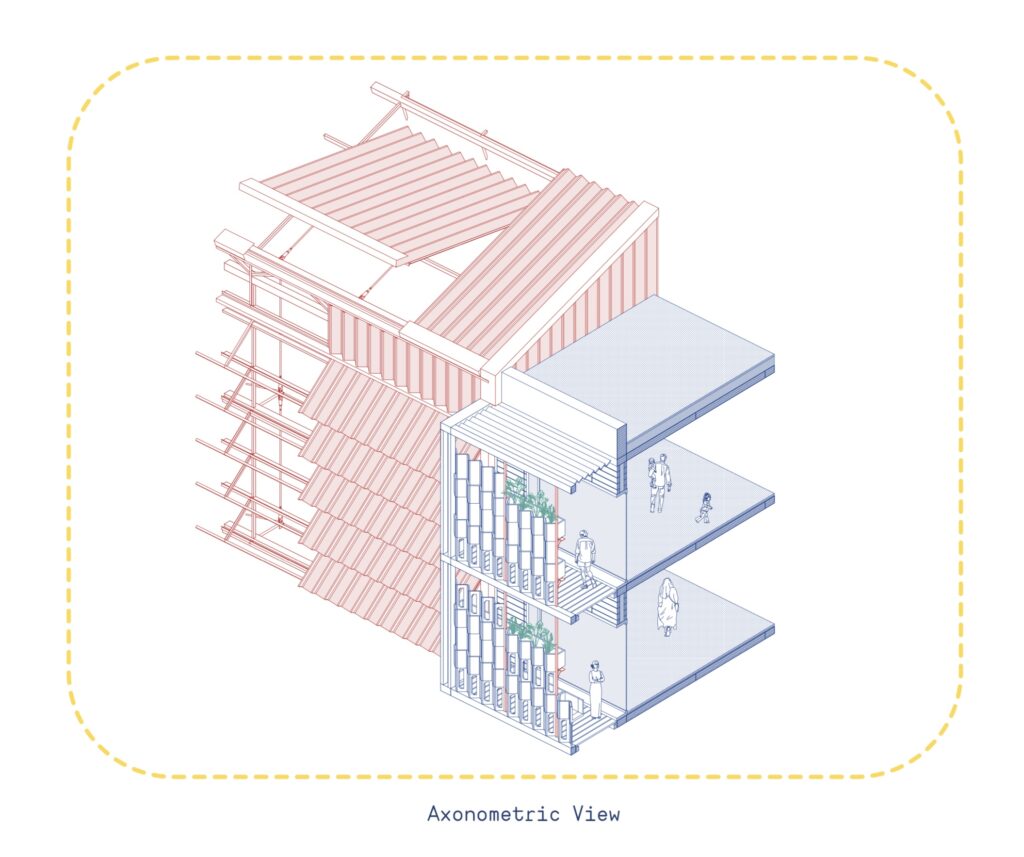
The building has two different facades. The residential side has wood balconies and walls made of compressed earth block and hemp panels, making it cozy and eco-friendly. The greenhouse side uses polycarbonate for the facade and is held up by a light structure made of wood trusses. This design helps both parts of the building function well for their specific purposes.
We’re breaking down the facade’s design into three detailed sections. This will give a clearer picture of how we’re using different materials and building methods to make the facade work well environmentally and be long-lasting.
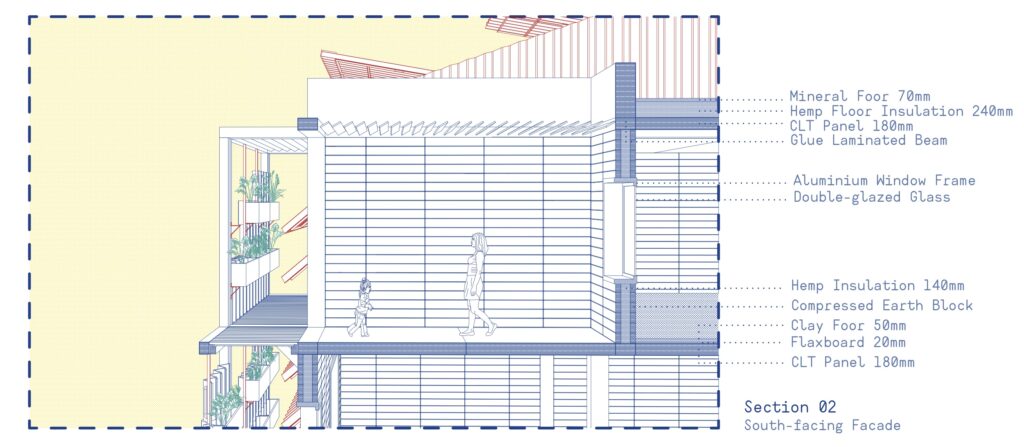
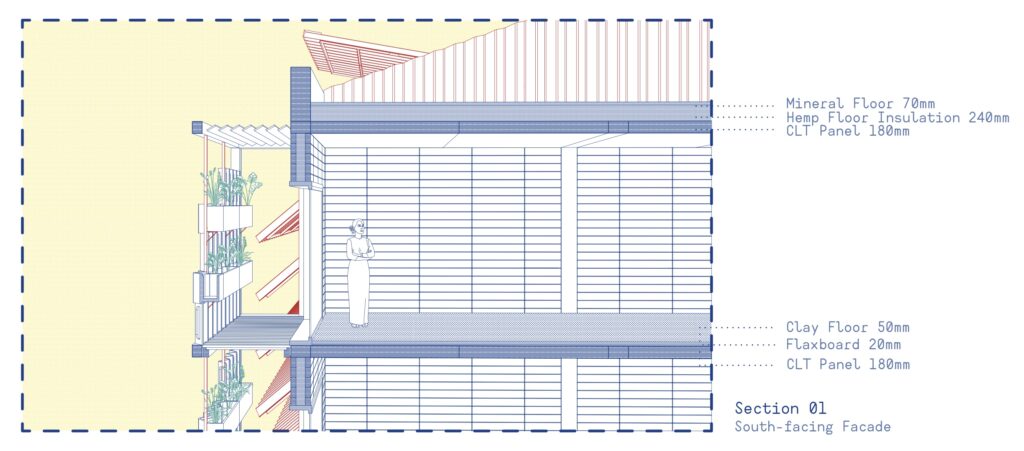
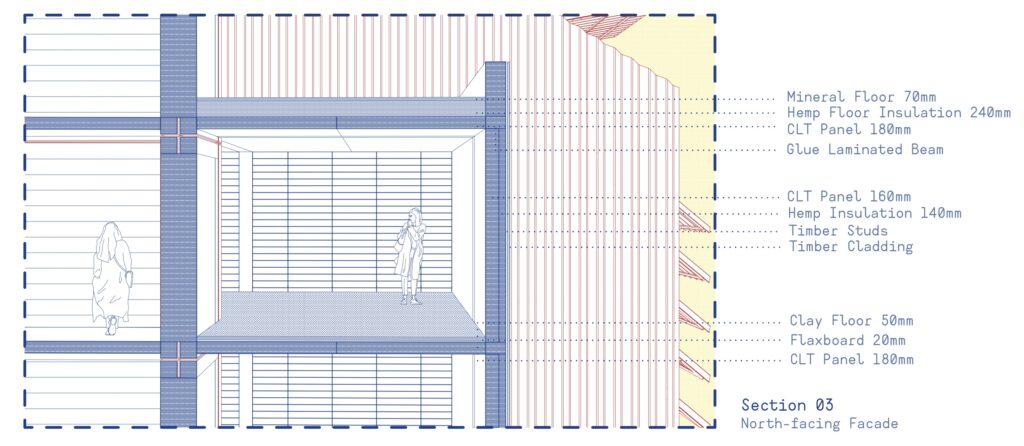
For the greenhouse facade, we used wood trusses that stretch 9.6 meters to give it a spacious feel. A light wood and steel frame supports the placement of the polycarbonate panels. This design choice makes the greenhouse easy to maintain and flexible for future changes, showing our commitment to making sustainable and adaptable building designs.
